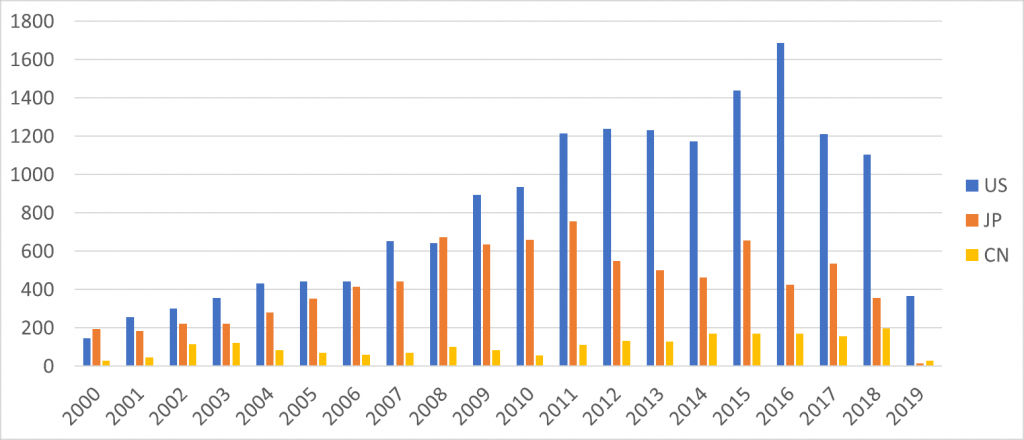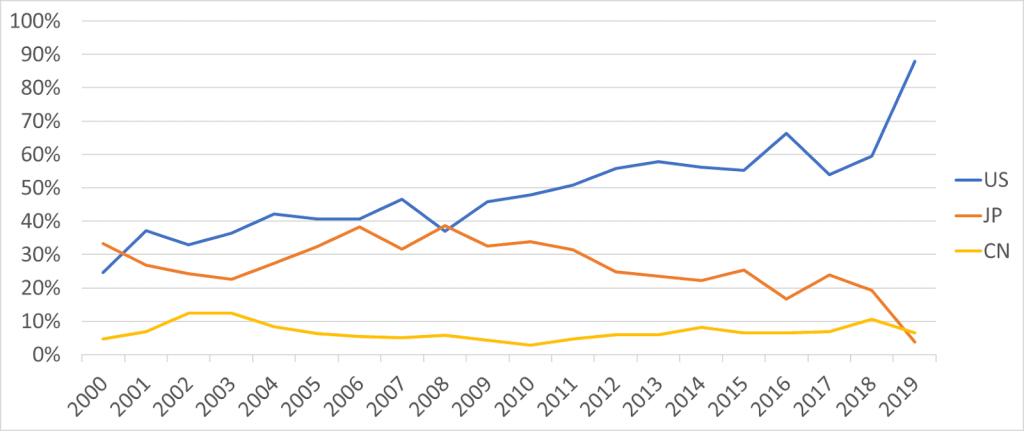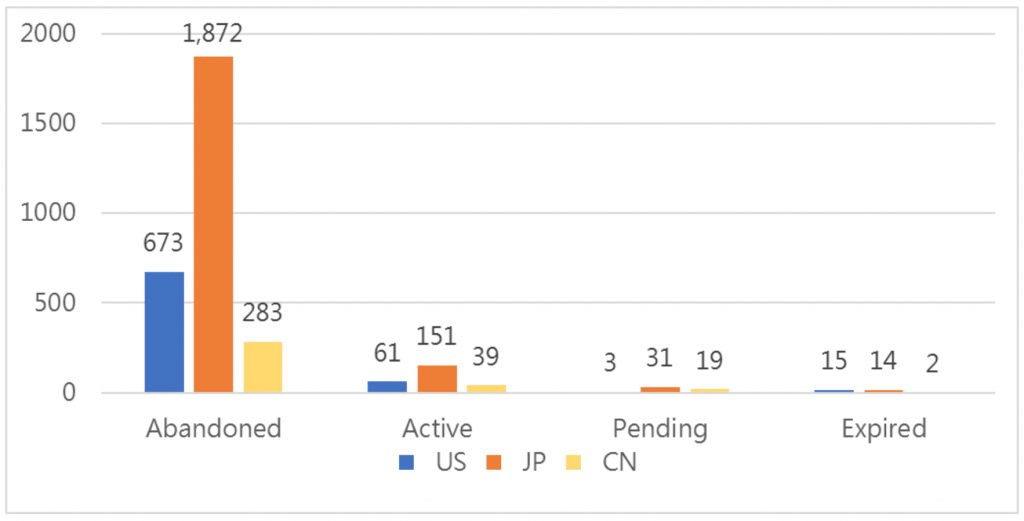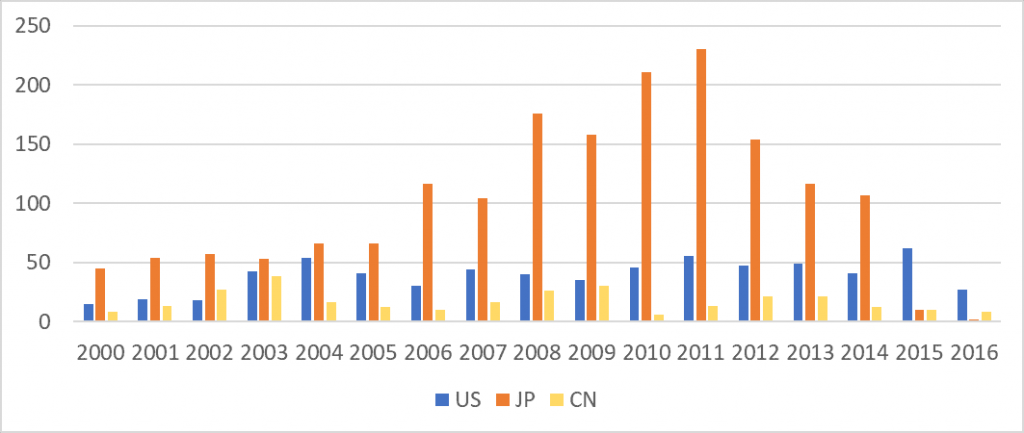In the NAND flash market, Toshiba‘s memory product market share is approximately 16%, second only to Samsung (roughly 38%). In 2017, Toshiba decided to make up for the funding gap of its energy business by spinning off its memory business group into a new company, TMC (Toshiba Memory Corporation) and sold equity for fundraising. TMC was eventually sold to the US-Japan-South Korea Alliance, which is led by the US investment company Bain Capital, for 2 trillion yen.
In October 2019, TMC officially changed its name to Kioxia and prepared itself to go public in 2020. Since TMC had only been established for two years at this time, most of its existing patents were transferred from Toshiba Corporation. This article analyzes TMC’s global patents and provides a glimpse into the patent deployment of the world’s second-largest NAND flash manufacturer.
Toshiba Memory was formerly a division of the Toshiba Corporation. In February 2017, the Toshiba Board of Directors decided to sell it and spun it off into a new company, TMC (Toshiba Memory Corporation). The memory-related patents initially owned by Toshiba were also transferred to TMC, which is now known as Kioxia.
Since Toshiba Corporation owns all the patents of the Toshiba Memory division and other Toshiba divisions, it is difficult for outsiders to determine which patents belong to the Memory division. Due to the large number of patents, one might wonder if Toshiba has actually transferred all of the Memory division-owned patents to TMC as they have claimed to have done, without leaving any patents out.
What would happen if this was the case? In this article, the authors will further discuss this issue.

The authors used Patent Vault by Patentcloud, the cloud-based patent intelligence platform, to create a patent portfolio called Toshiba Memory Patents. This patent portfolio holds all of the TMC patents (including patents owned by Toshiba Memory Corporation and Kioxia) and all of the patents of its patent families. The top five patent offices for patent applications are the United States, Japan, Taiwan, China, and South Korea. The US has the most patent applications, far more than the applications from Japan.


According to the application year distribution of Toshiba United States (US), Japan (JP), and China (CN) patents, the Japanese patent applications have been decreasing. In contrast, US patent applications have increased since 2009. This data indicates that Toshiba has been shifting its focus of regional deployment from Japan to the United States. Furthermore, the CN patent applications only account for 10% of Toshiba’s patent applications, which is a much lower percentage than both the US and JP patent applications. It shows the difference between its regional deployment and its lack of deployments in China.

An interesting finding from the data of the United States, Japan, and China patent offices is that Toshiba did not transfer all the patent families to TMC. This discovery means that the patents from the same family may have only been partially transferred to TMC. The JP patents accounted for the highest proportion of untransferred patents.


With further analysis of the legal statuses of the untransferred patents, the authors noticed that most of the untransferred patents were abandoned. Additionally, those abandoned patents were mainly applied for between 2006 and 2014, rather than patents with earlier application dates, that are about to expire.
A possible reason for the abandonment could be the financial crisis that occurred before selling the memory division. Those patents were presumably abandoned (especially the JP patents that were more costly to maintain) to lower expenses.
It might be considered a loss to TMC if the abandoned patents were high-value and with monetization potential. The most important aspects of this situation are the methods and processes Toshiba used to evaluate the quality and value of these patents. Are the evaluation indicators comprehensive? Was the evaluation process rigorous? These questions all relate to whether the company has adopted Agile Patent Portfolio Management for Patent Life Cycle Management.
The authors interpreted the patent family and assignment data to let the readers understand the regional deployment deficiencies of Toshiba Memory’s patents. Furthermore, a number of abandoned patents were not transferred to TMC; the majority of them were JP patents.
Therefore, the authors recommend that potential investors conduct patent due diligence on the acquisition target to get a thorough understanding of the company’s patent portfolio to avoid similar situations in M&A transactions in the future.
In part two of this article, the authors will further analyze the technology distribution of TMC’s patents and their patent quality and value.
Authors: Jean Chou, Steven Chang, and Bace Tseng (Wispro Technology Consulting Corp.)

